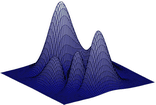Talk:Lysocline
| This article is rated Stub-class on Wikipedia's content assessment scale. It is of interest to the following WikiProjects: | ||||||||||||||||||||||||
| ||||||||||||||||||||||||
Wiki Education Foundation-supported course assignment
[edit]![]() This article was the subject of a Wiki Education Foundation-supported course assignment, between 20 August 2019 and 3 December 2019. Further details are available on the course page. Student editor(s): MadisonKnowlton. Peer reviewers: Aaslam30.
This article was the subject of a Wiki Education Foundation-supported course assignment, between 20 August 2019 and 3 December 2019. Further details are available on the course page. Student editor(s): MadisonKnowlton. Peer reviewers: Aaslam30.
Above undated message substituted from Template:Dashboard.wikiedu.org assignment by PrimeBOT (talk) 03:01, 17 January 2022 (UTC)
Calcite
[edit]Doesn't the saturation that they talk about refer to CO3-2, and not CaCO3?
--Dawei20 (talk) 18:30, 17 May 2009 (UTC)
Where on Earth has this idea of moving the pelagic limestones come from!? It's completely outlandish and really NEEDS a source if it's to remain present. Not to mention wouldn't it be more sensible to move it to land? Since then there's a double effect of dropping sea level and raising land level. 128.232.250.254 12:38, 19 May 2006 (UTC)
- Agreed - removed. Vsmith 12:54, 19 May 2006 (UTC)
Snowline?
[edit]In what sense is the CCD 'the equivalent of a marine snow-line'? This line probably needs rewriting/removing Snarfevs 12:03, 6 November 2007 (UTC)
- I think what's meant here is that above the CCD, calcium carbonate is stable, so will not dissolve on the seafloor. Below the CCD, it is unstable and so dissolves at the seafloor. Viewing the seafloor as a range of mountains, stable deposits of calcium carbonate (= chalk) would appear to give the "higher altitudes" (= shallower seafloor; above the CCD) a dusting of snow. This link shows a stylised series of plots (left column) in which the CCD increases in depth down the page. Anyway, as you've correctly pointed out, the article is somewhat opaque on this point at present. I'll see what I can do. Bit busy at this precise moment though. Cheers, --Plumbago 12:22, 6 November 2007 (UTC)
- Thankyou for your response - that's a very helpful depiction. I will endeavour to draw something similar for inclusion in about a week's time Snarfevs 12:50, 6 November 2007 (UTC)

- I should have said before that I knocked up the plots shown on the website above. My co-workers favoured static versions with an ugly colourscale, but I did do animated versions as well. The animation to the right is an example. Cheers, --Plumbago 10:16, 8 November 2007 (UTC)
lower depths?
[edit]and at greater depths in equatorial regions, and lower depths in the polar regions.
I assume from the apposition, these are meant to be opposites, but I read them both meaning the same thing. Maybe lesser depths, or something else? --81.153.144.130 (talk) 18:17, 1 March 2010 (UTC)
- How about "deeper in equatorial regions, and shallower in the polar regions."
- Or perhaps, "deeper near the equator, and shallower at more extreme latitudes."
- NCdave (talk) 23:27, 22 November 2015 (UTC)
Student Editor
[edit]Hello. My name is Madison Knowlton, the assigned student editor for this page. Upon reviewing this article, I believe it needs more sources and more updated sources to supplement the information we are trying to provide to readers. While the source does support the information, it would be a great improvement if more scholarly sources were able to be cited to add more information to the article. If you have any ideas on where to find good information or more sources, please let me know! Looking forward to working on this article. MadisonKnowlton (talk) 03:06, 11 September 2019 (UTC)
- Hi MadisonKnowlton, Someone suggested, "Wally Broecker's review on marine carbonate cycle would be useful. Has some nice cartoons of carbonate cycle. Treatise on Geochemistry, Volume 6, 2003, Pages 529-549 6.19 - The Oceanic CaCO3 Cycle, W.S.Broecker". See link here, and the response we got on Twitter. Thanks for working on this article! Jayzlimno (talk) 17:27, 11 September 2019 (UTC)
Student Editor- Sources
[edit]Hello again! This is the bibliography of the sources I have found that I believe will provide some great information to add to the article. Feel free to look them over. Thank you for the advice last time, it was a great help! More is always appreciated! MadisonKnowlton (talk) 18:08, 17 September 2019 (UTC)
Broecker, W.S. (2009). “Wally’s Quest to Understand the Ocean CaCo₃ Cycle”. Annual Review of Marine Science. 1(1): 1-18. https://doi.org/10.1146/annurev.marine.010908.163936
Broecker, W.S. (2003). “6.19-The Oceanic CaCO₃ Cycle”. Treatise on Geochemistry. 6(1): 529-549. https://doi.org/10.1016/B0-08-043751-6/06119-3
Shiraiwa, Yoshihiro (2003). “Physiological regulation of carbon fixation in the photosynthesis and calcification of coccolithophorids”. Comparative Biochemistry and Physiology Part B: Biochemistry and Molecular Biology. 136(4): 775-783. https://doi.org/10.1016/S1096-4959(03)00221-5
Signman, Daniel M.; Boyle, Edward A. (2000). “Glacial/interglacial variations in atmospheric carbon dioxide”. Nature. 407: 859-869. https://doi.org/10.1038/35038000
Volat, Jean-Louis; Pastouret, Leo; Vergnaud-Grazzini, Colette (1980). “Dissolution and carbonate fluctuations in Pleistocene deep-sea cores: A review”. Marine Geology. 34(1-2): 1-28. https://doi.org/10.1016/0025-3227(80)90138-3
Zeebe, Richard E. (2012). “History of Seawater Carbonate Chemistry, Atmospheric CO2, and Ocean Acidification”. Annual Review of Earth and Planetary Sciences. 40(1): 141-165. https://doi.org/10.1146/annurev-earth-042711-105521
- Those look like great sources and will improve the page immensely. We'll keep you posted if anyone recommends other good sources. Cheers, Jayzlimno (talk) 21:31, 22 September 2019 (UTC)



